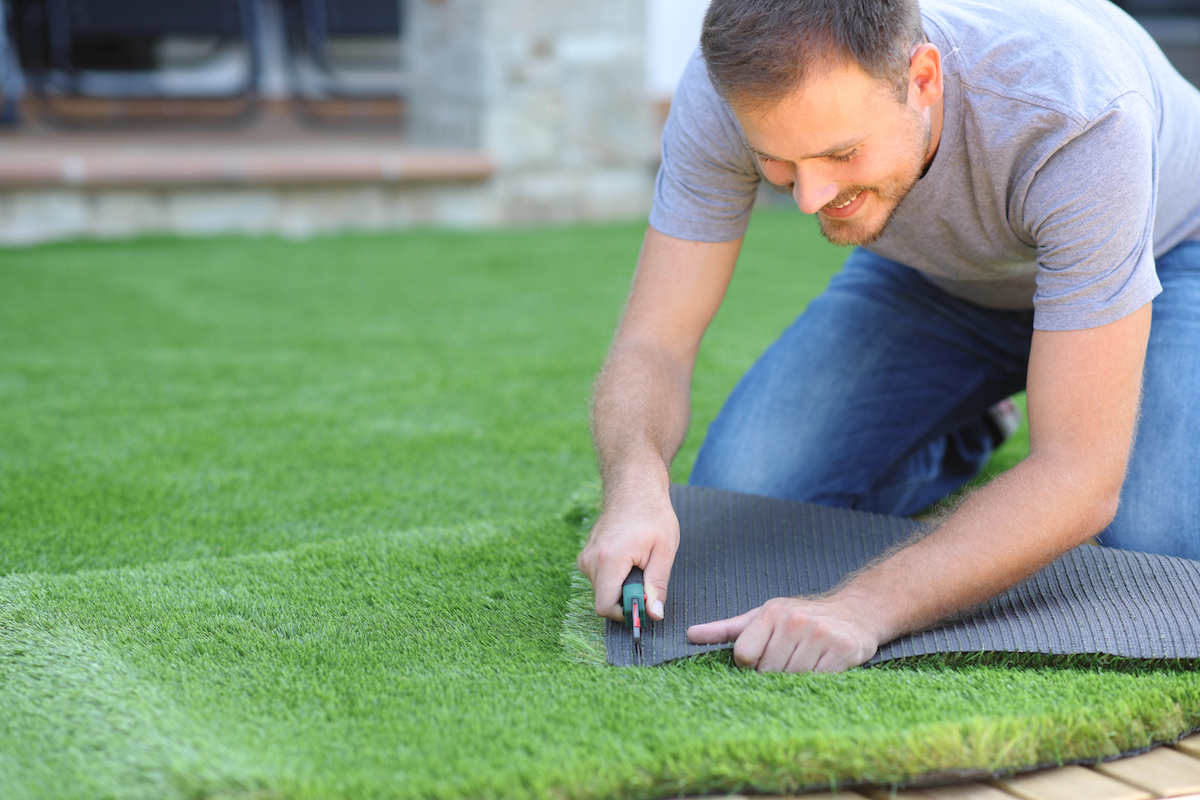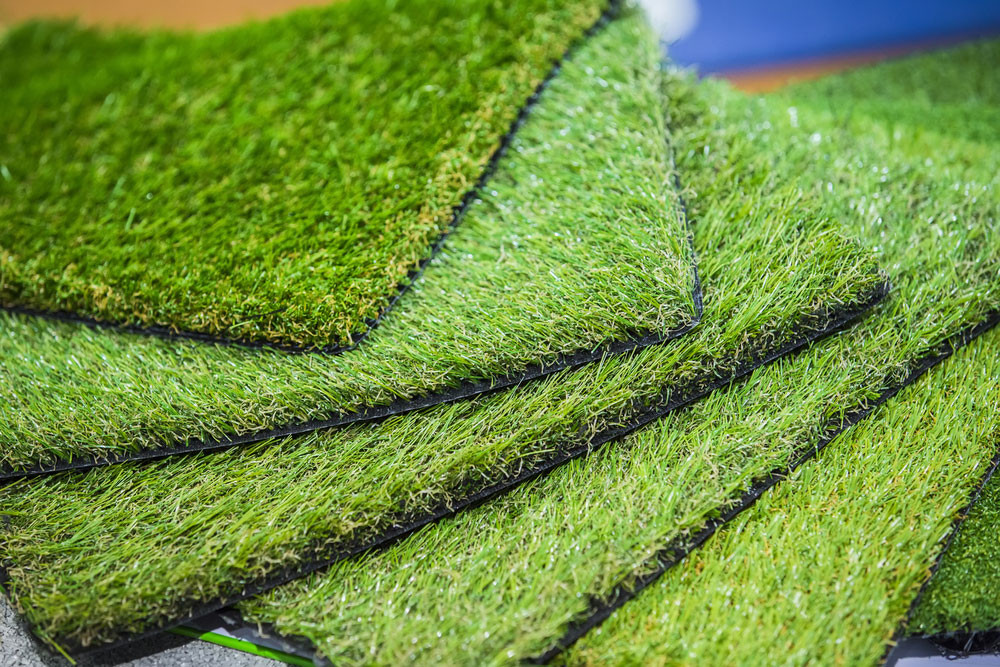Select Reputable Artificial Turf Companies Phoenix for Long-Lasting and Natural-Looking Grass
Select Reputable Artificial Turf Companies Phoenix for Long-Lasting and Natural-Looking Grass
Blog Article
See Why Homeowners Prefer Synthetic Grass for Sustainable Landscaping Practices
As house owners progressively focus on sustainability in landscaping, synthetic grass has emerged as a compelling alternative to traditional grass. Its capacity to preserve water, minimize upkeep efforts, and decrease ecological impact positions it as a practical selection for those looking for eco-friendly remedies. The visual charm and adaptability of synthetic turf provide to diverse layout choices. Nonetheless, the effects of this shift expand past mere ease and appearances, motivating a closer examination of just how these options affect wider environmental results. What remains to be discovered is the full extent of benefits that fabricated turf can use to property owners and the setting alike.
Water Preservation Benefits
One of one of the most substantial advantages of synthetic grass is its duty in water preservation. Traditional turf yards require significant quantities of water to keep their lush appearance, commonly bring about overuse of local water resources, especially in deserts. On the other hand, synthetic grass eliminates this demand entirely, as it does not require irrigation. This not only conserves water however likewise minimizes the stress on local water supply, especially during drought problems.
Furthermore, the setup of synthetic grass can contribute to a more sustainable landscape. House owners can dramatically decrease their water expenses, enabling reallocation of resources to various other ecological efforts or home usages. Furthermore, synthetic turf is designed to hold up against numerous climatic conditions without the demand for additional watering, making it an optimal selection for areas dealing with water scarcity.
The ecological benefits extend past prompt water savings. By lowering water usage, artificial lawn assists to mitigate the influences of environment change, protecting important communities that are intimidated by extreme water extraction. As lasting landscaping practices gain grip, man-made turf becomes a responsible selection for property owners looking for to develop eco-friendly outside spaces.
Minimized Maintenance Efforts
Synthetic grass dramatically decreases upkeep efforts contrasted to traditional turf yards. With artificial lawn, homeowners can get rid of the time-consuming tasks connected with natural landscaping, such as mowing, feeding, and weeding. This not just saves important time yet also minimizes physical labor, making grass care available for people of every ages.
One of the most noteworthy benefits is the lack of regular mowing. Conventional yards call for constant trimming to maintain a visually pleasing height, whereas fabricated turf remains regularly rich without the demand for reducing. In addition, homeowners no more need to apply chemicals or plant foods, which are commonly called for to maintain all-natural yard healthy and balanced. This change not just lightens the work yet additionally advertises a neater, extra consistent appearance year-round.
Furthermore, artificial turf is long lasting and resistant, calling for very little upkeep past periodic brushing and washing to eliminate debris. This simplicity of maintenance permits home owners to enjoy their outdoor rooms without the continuous worry of maintenance, offering more time for leisure and family members activities. Ultimately, the lowered maintenance initiatives related to synthetic grass make it an appealing choice for those seeking a low-maintenance, aesthetically appealing landscape.

Ecological Influence Reduction
There is a growing recognition of the environmental advantages related to fabricated turf, particularly in terms of water conservation and decreased chemical usage. Standard grass call for substantial quantities of water, specifically in drought-prone areas, bring about boosted pressure on regional water sources. In comparison, synthetic grass gets rid of the requirement for irrigation, dramatically minimizing have a peek at this site water consumption and advertising sustainability.
In addition, standard grass upkeep typically includes the application of plant foods, herbicides, and pesticides, which can add to dirt and water contamination. Fabricated turf minimizes this ecological risk by calling for very little upkeep and virtually getting rid of the requirement for dangerous chemicals. This not only enhances dirt health and wellness but additionally secures local ecosystems from toxic drainage.
Furthermore, the manufacturing of all-natural grass yards usually involves making use of fossil gas for trimming and landscape design equipment, more adding to greenhouse gas exhausts. By selecting artificial lawn, property owners can considerably decrease their carbon footprint related to yard treatment activities.
Visual Appeal and Convenience
In addition to its ecological benefits, synthetic grass supplies significant aesthetic charm and convenience for landscape design. Property owners can attain a lavish, green appearance year-round, getting rid of the seasonal variations generally associated with natural turf. This constant visual not just boosts the aesthetic appeal of a home however likewise adds to a sleek and properly maintained look.
Moreover, synthetic grass is offered in a range of appearances, designs, and shades, allowing for customization to suit specific choices and style styles - Arizona artificial turf. Whether made use of in property gardens, industrial spaces, or recreational locations, it can flawlessly incorporate into varied landscape design styles, from modern minimal to lavish tropical settings
The flexibility of man-made lawn extends beyond mere look; it can be mounted in various locations, consisting of rooftops, patios, and also indoor rooms, developing chances for unique landscape design services. In addition, it appropriates for a series of tasks, from kids's play areas to pet-friendly settings, offering capability without jeopardizing design.
Eventually, the visual appeal and convenience of man-made turf make it an eye-catching choice for homeowners seeking lasting landscaping remedies that do not sacrifice beauty for ecological responsibility.

Long-Term Price Financial Savings
One of the most compelling benefits of man-made grass is its potential for lasting expense savings. Unlike all-natural grass, which requires normal maintenance-- consisting of mowing, watering, feeding, and insect control-- artificial lawn considerably reduces these recurring costs.
Additionally, man-made lawn has a life expectancy of 15 to 25 years, depending on its high quality and usage. This resilience reduces substitute costs, making it a much more economical choice over time. The first investment in artificial grass can often be recovered via the savings accumulated over time.
While the ahead of time cost might appear higher compared to turf installation, the advancing savings from decreased upkeep and water use frequently exceed these first expenditures. Eventually, the fostering of artificial turf not only promotes a lasting landscaping service however additionally offers property owners a monetarily wise option that aligns with long-lasting budgeting goals.
Verdict
Man-made grass emerges as an engaging choice for sustainable landscaping, supplying substantial advantages in water conservation, lowered maintenance efforts, and lessened ecological effect. As neighborhoods increasingly focus on ecologically friendly techniques, the adoption of artificial look at here lawn represents a dynamic step toward attaining resistant and sustainable landscapes.
Additionally, man-made turf is made to stand up to various weather conditions without the demand for additional watering, making it an optimal choice for areas encountering water deficiency. (Arizona artificial turf)

Synthetic page grass emerges as a compelling choice for sustainable landscaping, offering significant advantages in water preservation, minimized maintenance initiatives, and lessened ecological impact.
Report this page